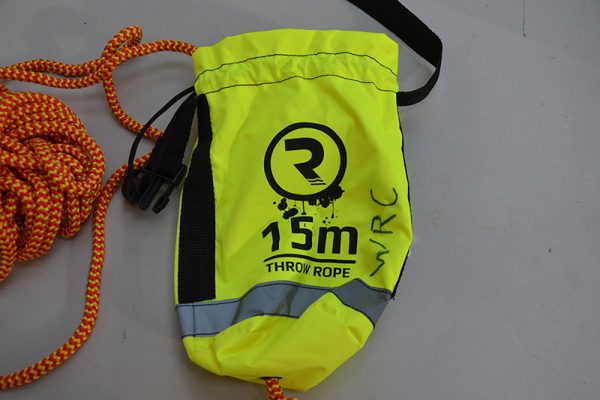Report published into the failure of a throw bag rescue line during a boat rescue drill, which has highlighted a wider concern
The Marine Accident Investigation Branch (MAIB) has published a comprehensive report into an incident involving a defective throw bag rescue line, which has put the spotlight on unregulated safety gear.
Ten further throw bags with defective rescue lines were identified following a customer notification campaign by the manufacturer, RIBER, and publication of the incident in British Rowing’s newsletter.
Laboratory tests conducted for the MAIB established that the joined sections of the RIBER rescue line were 12-times weaker than the rope itself.
Throw bags are designed to rescue people from the water, and are classed as public rescue equipment. They are not mandatory items of carriage on commercial or leisure vessels.
There is no legislative framework that governs them and, consequently, throw bag rescue lines are not required to comply with any quality or safety standard.
Nevertheless, it is estimated that there are tens of thousands of throw bags in use in the UK alone, both in the emergency services and in the water leisure sector.
What happened?
Warrington Rowing Club was carrying out the boat capsize rescue drill in a swimming pool.
As a young person was being pulled to the poolside by the throw bag rescue line, the line parted.
The young person was uninjured during the incident, which occurred at around 1830 on 24 March 2018.
The parted line was examined and found to be made up of four pieces of rope thermally fused together, and it had failed at one of the joints.

15m rescue line with three joints
Safety lessons
- the failure of a throw bag rescue line during an emergency rescue operation in fast flowing and deep waters could potentially result in the casualty drowning
- a large number of throw bags are in use in the UK, both in the leisure sector and emergency rescue services. However as throw bags are not considered safety or lifesaving equipment, there is no requirement to manufacture them to a specific safety or quality standard
- at present, the only safeguard against poor and unsafe workmanship of throw bags is limited to the quality checks of the manufacturer; such checks lack third party oversight
Other incidents
The MAIB reports that in addition to the ten defective throw bag lines already identified in 2018, RIBER had detected another throw bag with joints in its rescue line, supplied to them approximately six years ago by its manufacturer in China.
In September 2009, Crewsaver Limited, a manufacturer of LSA, reported that a small number of its YAK range of throw bags were found to have defective rescue lines, with joints similar to those found on the RIBER product.
Read the MAIB safety bulletin here.
Recommendation
The British Standards Institution has been recommended (2019/105) to develop a standard for public rescue equipment, ensuring that the topic of throw bags and their rescue lines is addressed as a priority.
Practical Boat Owner magazine would like to hear from any boat owners who have had a bad experience with a throw line. Please email pbo@ti-media.com




